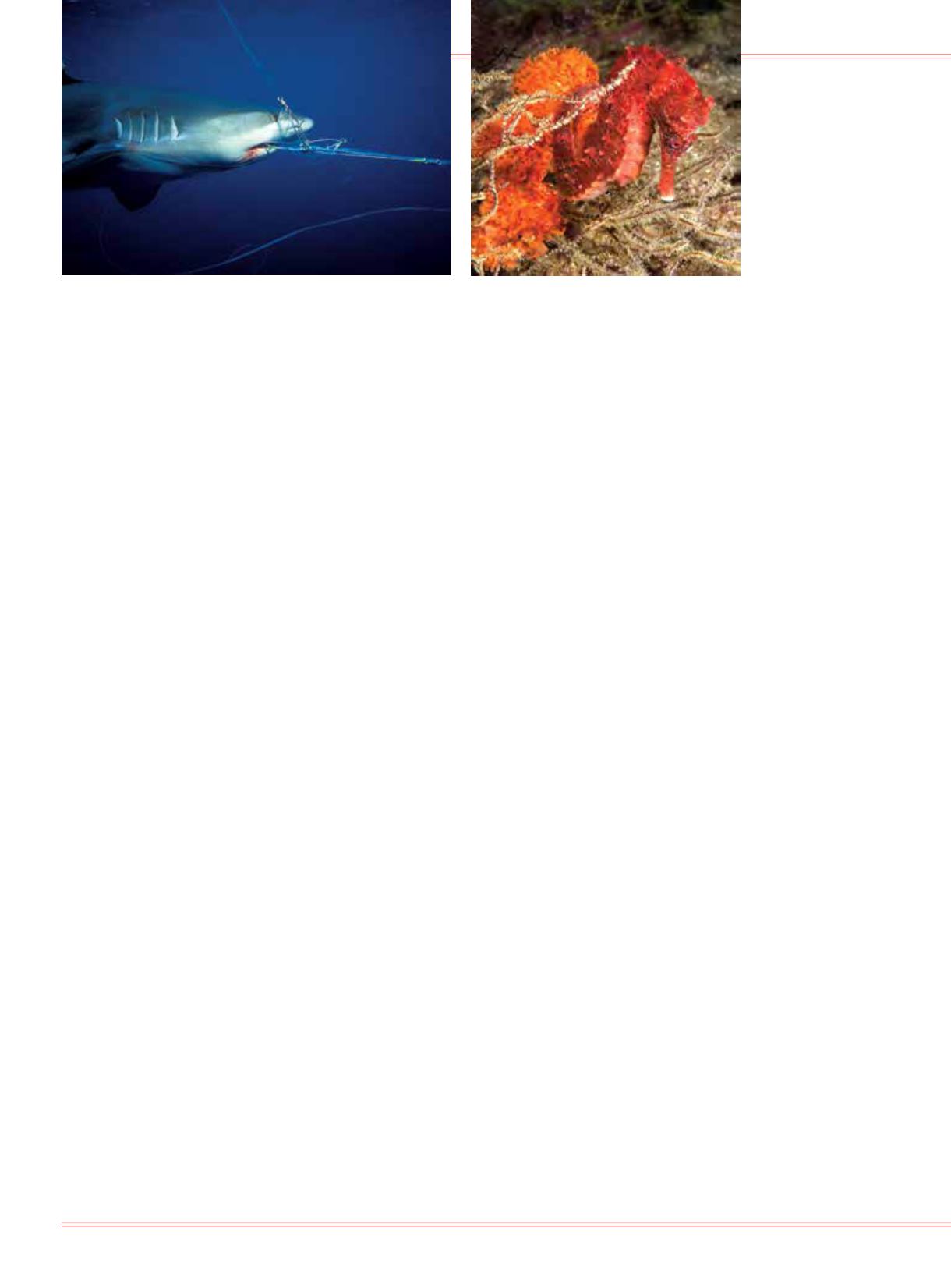
86
|
FALL 2014
Capturing a sea turtle on a dive is an amazing
experience, but volunteer divers at Cocos can do as
much or little of the scientific work as they want.
Stabb, who considers himself a hands-on person, tries
to do everything, but he also recognizes the value of
volunteers who choose to observe: “I’ve seen plenty
of people who come and are happy just to watch, and
Todd [Steiner] is happy to have them. Having people
along is effectively funding the research.”
For volunteers at Cocos, the opportunities to
engage in a variety of tasks are many. Nonie Silver, a
Washington, D.C., business owner and participant on
many of the Cocos Island expeditions, says she often
serves as the logistics person: “The shark tags need
to be prepped and tasks defined for each of the dives,
whether we’re retrieving receivers, catching turtles or
tagging sharks. For example, when we catch a turtle,
there are a series of steps that need to be completed
before the turtle can be released back to the sea.
“It makes you feel good that you’re doing something to
help,” Silver continues. “In other places you see the lack
of fish or coral, and it makes you appreciate the fact that
this one little thing you’re doing may help the ocean.”
Volunteers can also help by taking photographs; the
researchers maintain a photo identification library in
cooperation with local dive operators. These photos,
Steiner explains, help him track individual animals even
when he isn’t there in person.
Tagging sharks is a bit trickier because it involves using
a spear to inject a tag at a specific point on the shark’s
body. The Cocos Island National Park’s rules require that
volunteers who would like to help with this task have a
scientific background and relevant experience, but anyone
can help count sharks and rays, which is an important
element of documenting population trends. For these
jobs, divers receive instruction in species identification
and survey techniques and then use an underwater slate
to record location, time and depth at five-minute intervals
for each species they spot. Still other volunteers remain
on the boat and record this data on computers.
Cocos Island provides only one of the many
opportunities to contribute to marine science and
conservation work. In other locations, the Reef
Environmental Education Foundation (REEF) asks
volunteers to help cull the increasing numbers of
invasive lionfish prowling their favorite dive sites. The
organization is documenting the consequences of the
lionfish invasion in hopes of ultimately minimizing its
effect on native fish populations. Under the direction of
Lad Akins, REEF director of special projects, and Peter
Hughes, founder of DivEncounters Alliance, up to 20
divers at a time can participate in lionfish collection and
dissection in addition to reef fish surveys.
Pam and Terry Hillegas of Englewood, Colo., have
taken six REEF lionfish trips to various locations and
say that their trips have made them more aware of
the ways that invasive species can affect the ocean.
According to Terry, the service and educational aspects
of the trip added an enormous amount of value to his
experience: “That really made the whole experience
more interesting for us. I feel like I’m doing something
beneficial and not just enjoying recreational diving.”
“Lad and Peter are very knowledgeable and show you
how to correctly handle lionfish so you don’t have any
mishaps,” Pam adds. “It’s amazing how comfortable
they can make you feel handling these fish.” Those who
are interested in taking these expeditions but don’t care
to spear or bag lionfish can also do surveys to count the
lionfish and the other species on individual reefs.
Organizations such as REEF have a larger effect on
the environment than one might think. “I dive quite a
bit in the Caribbean and realize the damage that lionfish
do,” says Calvin Roggow, a volunteer from Oklahoma.
“REEF seems to be at the forefront of actively trying
to control them. We go back because the trips are so
enjoyable; it’s really a great time, and you’re doing a
good thing for the ocean.”
For divers looking to travel a bit farther afield,
Projects Abroad offers two land-based volunteer
diving projects in Southeast Asia — one in Cambodia
and the other in Thailand.
On the Cambodian island of Koh Rong Samloem, a
two-hour boat ride from the coast, divers help survey
marine habitats as well as coral and fish diversity,
From left: Longline
fishing is efficient and
destructive. Apex preda-
tors like sharks are
particularly susceptible.
The Seahorse Trust uses
volunteer divers to help
them protect seahorses,
150 million of which
are taken from the wild
each year for traditional
Chinese medicine.
STEPHEN FRINK
STEPHEN FRINK


